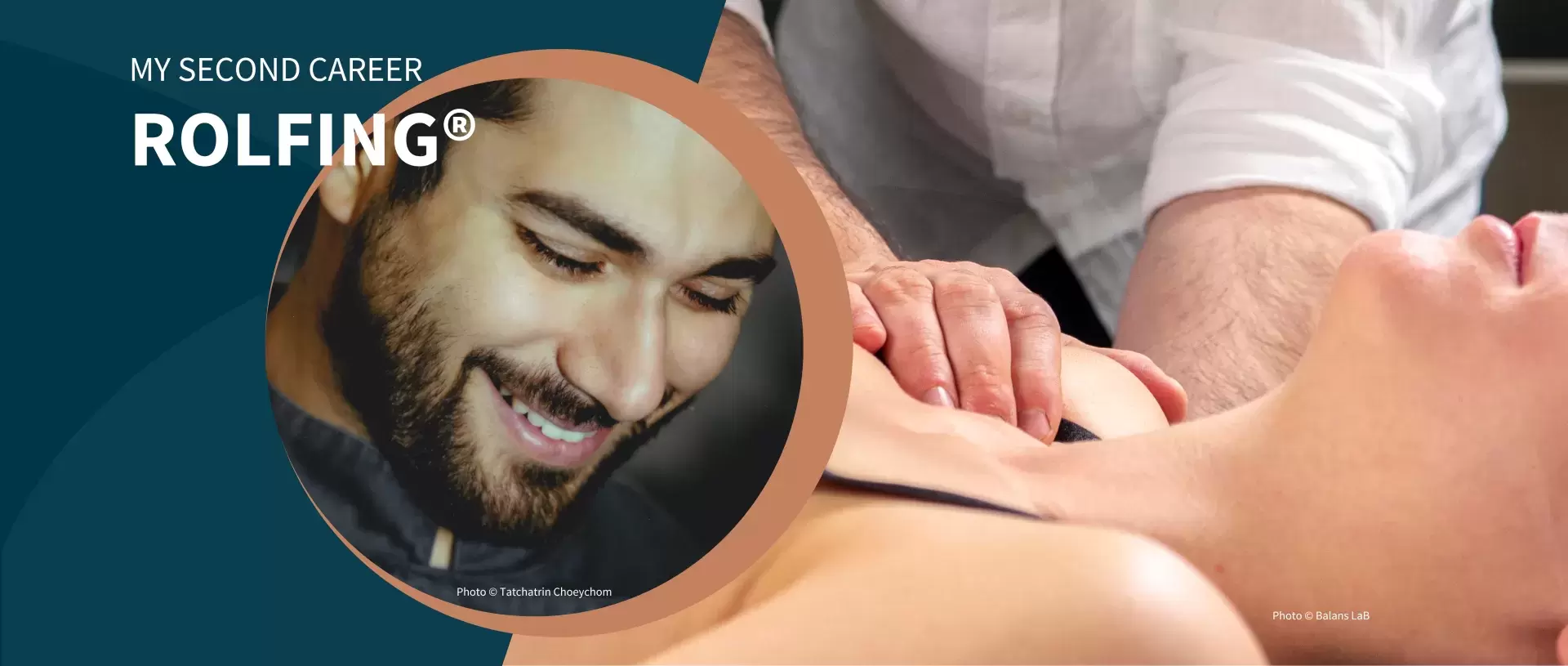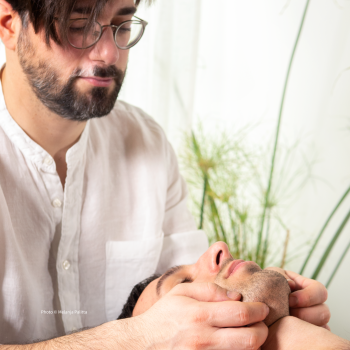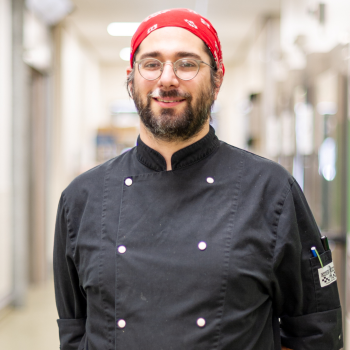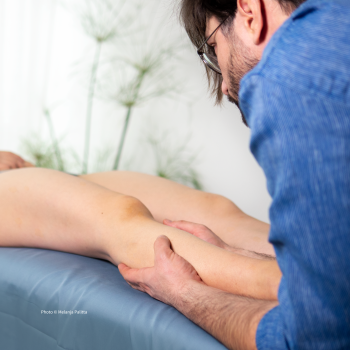By Kostas Stavridis
Having moved from Greece to the Netherlands as a chef in a high-end restaurant, I have always been interested in making people happy and meeting their needs. At one point, I realized that the healing properties of food and helping people were more in my focus than the actual process of creating great meals. I had already practiced Aikido and Reiki privately in Athens. As I got involved in holistic ways of healing, I became aware of my desire to utilize my hands more actively in helping people by practicing bodywork.
How did you choose to become a Rolfer®?
I came across Rolfing® Structural Integration for the first time when my friend, who is a professional dancer, suffered from shoulder pain. I tried to help her with Reiki but the pain kept coming back, other methods did not ease the pain either. Eventually she found a Rolfer who managed to alleviate her pain.
When researching and comparing different bodywork methods like chiropractic, osteopathy, physiotherapy, Feldenkrais, and Alexander technique, I quickly noticed the Rolfing method’s benefits: The hands-on aspect of Rolfing is very appealing to me. Feldenkrais follows similar ideas, but from a movement perspective. Chiropractic has also a holistic element to it, but I prefer the softer approach of Rolfing rather than forcing something into its place.
In Rolfing, I can create space in the body and through this help the body remember what it is like to be free
In 2017, I joined the Spectrum Rolfing Seminar [now “Level 1] and in 2018 I finished my training as a certified Rolfer® at the European Rolfing® Association in Munich. I have been practicing in the Netherlands ever since.
Why Rolfing?
I like the holistic vision of Rolfing - it looks at the bigger picture. The manifestation of a symptom usually goes much deeper than the alleviation of that symptom. Rolfing is not just about relieving symptoms; it is more than that.
Rolfing is about bringing the human into a better relationship with the environment. It integrates one’s whole being by bringing the body into gravity. As a Rolfer, I can help people in a meaningful way and improve their lives
Thanks to the holistic, process-based approach towards improving a person’s structure and function, and the use of gravity as a tool, I find Rolfing to be effective on many different levels and in many ways.
For me, the most interesting transformation I experienced through the Rolfing process was that the changes in my structure have changed and improved the way I experience my life. I have found out that I am less stressed and more effective at doing my work. I also feel that I can manage inter-personal relationships in a more relaxed manner.
How do you find working in two professions?
As a full-time chef, I worked for high-end restaurants and hotels. I got to the point at which I couldn’t continue with high-end cooking – the waste of food was painful to me, the long hours were very stressful, and the income was not appreciative. But now I have found a part-time position in business catering which I really enjoy, as working as a chef comes easy to me. This employment gives me a stable routine in my life. Working as a Rolfer in my own practice is completely different. It is refreshing, personal, and highly rewarding.
Rolfing gives me a lot of energy. I find it more meaningful to connect with people on a personal level and it pays significantly better
Does anything tie the two jobs together?
Working with the hands is required in both professions as well as seeing the bigger picture – if you start with pepper, meat, and onion you must also see what you can make with that. It is similar with the clients who come – you have to see the bigger picture when it comes to how you can help them. When working in the kitchen I observe my colleagues for body reading and am trying to understand their movement patterns outside of the safe environment of my practice– if I have some spare time.
What comes in very handy from cooking is that I have a developed a working understanding of anatomy by feeling how bodies are put together and function - how muscles, fascia, and bones are connected and how the different layers feel.
We are what we eat – what you put into your system is what your body is made of. All this knowledge I have from dealing with food helps me to work with my clients as well.
Would you advise other cooks to become Rolfers?
Kitchens are generally harsh environments, and most chefs are content that they have got around studying. To become a Rolfer, one would really need to sit down and study anatomy, physiology, and write essays. Becoming a Rolfer also requires skills like being empathic, having an interest in people and being ready to look at a body in a very different way – and yes, cooks can be good Rolfers!
Interviewee: Certified Rolfer® Kostas Stavridis - Netherlands
Interview and editing: Sabine Becker
Photos: Tatchatrin Choeychom and Melanja Palitta
Visit Kostas Stavridis’ website
Read article in Dutch
Did you know?
Rolfing training is now coming to the Netherlands. Check out the course dates and register here.
More information on how to become a Certified Rolfer®.
Learn more about Rolfing.
Find a Rolfer near you.
Want to know more?
Sign up for our newsletter and receive regular information about Rolfing® Structural Integration.










